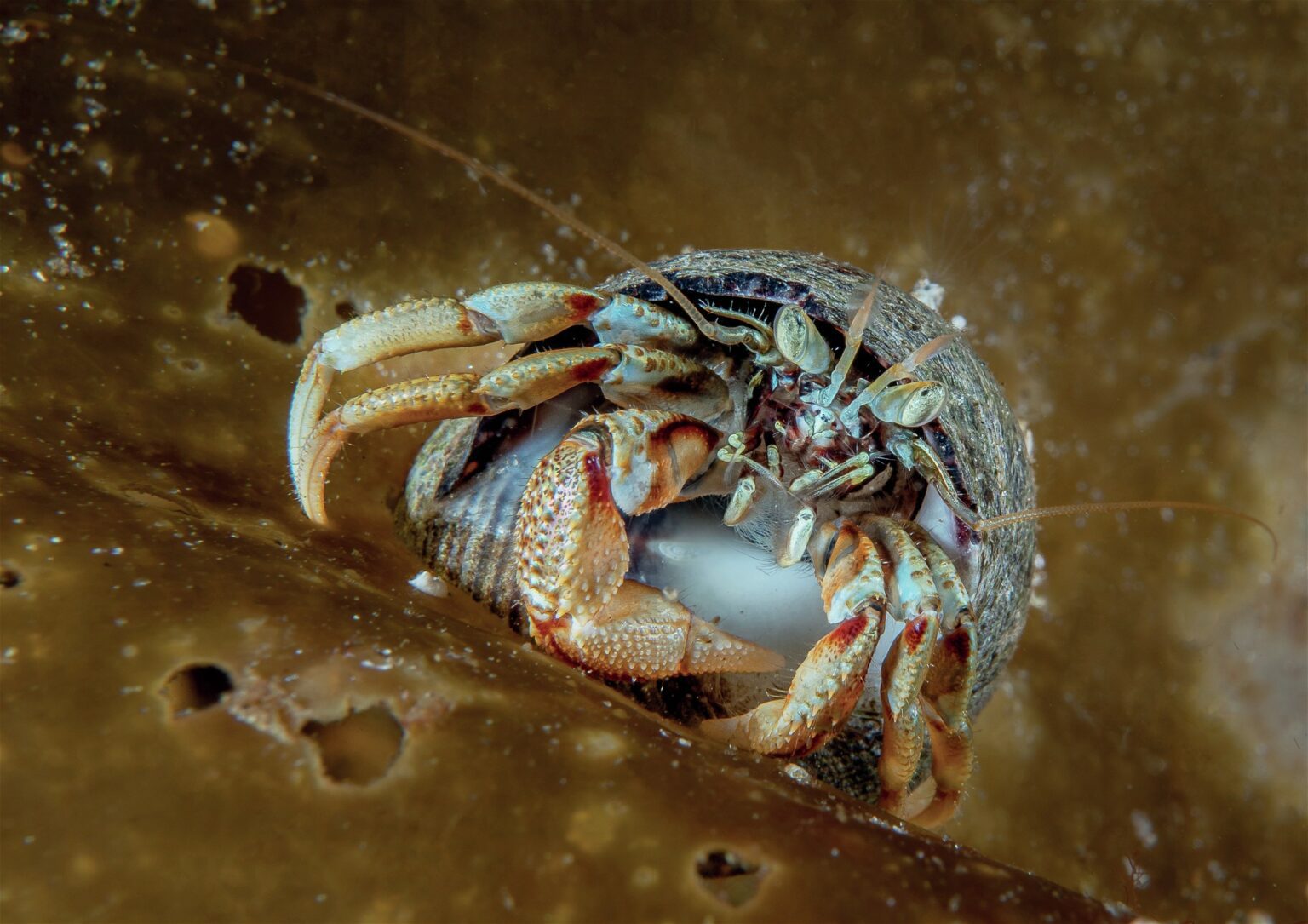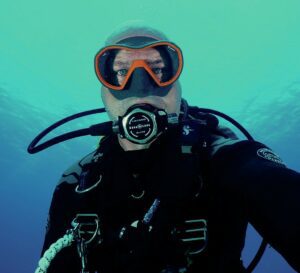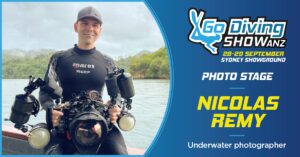When you think of Scotland, what comes to mind? Epic mountain ranges? Beautiful forests? Majestic lochs? Maybe even her rugged coastline? But what about what lies beneath the waves? Ross McLaren reveals what lies under the water in Loch Long.
Photographs by Ross McLaren
Underrated Diving Destination

I think it’s fair to say Scotland’s beauty is well documented, but there’s a whole part of our wee country that I believe has been overlooked by the public, and sometimes even divers. Ok, let’s be fair, Scotland isn’t exactly the diving capital of the world. When you think of places to visit, I’m not sure it would appear in many peoples top ten, (ok, maybe Scapa Flow, if you like a lot of rust), but you might be surprised to find there is some spectacular diving to be found in Bonnie Scotland.
The Historical Loch Long

At 20 miles long, Loch Long doesn’t get its name from its length. Actually, Loch Long in Gaelic translates to ‘Ship Lake’ and the name dates back to 1263, when the Vikings saw Arrochar, at the top of the loch, as a key target from which they could drag their ships across land to attack the unprotected settlements of Tarbet.
The Dive Sites of Loch Long

Anyway… brief history lesson over, back to diving. If you do a quick check of Finstrokes you’ll see that there’s no less than 13 dive sites in Loch Long – that’s a staggering number in one body of water and all within an hour’s drive from Glasgow City Centre. I’ll be honest, until I started researching this piece, I didn’t actually realise there were so many. I’ll hold my hands up, I’m no expert by any stretch of the imagination and I’ve certainly not dived all 13!
Exploring the Sites: Finnart/A-Frames


Of the sites, in my opinion, there are three that stand out for their incredible underwater scenery, ease of access and are definitely worth a visit if you are up this way. As with sites around the country, every club/organisation/dive school seem to have their own names for each one, but I’ll try and give as many names as possible for each site.
Finnart (sometimes referred to as A-Frames) is probably the most-popular site in Loch Long, is probably the most-popular site in Scotland, and if not the number one, it’s definitely up there. Finnart was built by the Americans during World War Two to offer a deep water oil terminal within the defensive ring of the Clyde. Chances are if you’ve taken part in any training or courses here, you’ll have at least done one dive at the ever-popular A-Frames, but it’s not just for trainees.
At A-Frames you’re met with an excellent carpark (which gets very busy in the summer weekends) and an entry that’s pretty good by many respects, though the small scramble down to the beach does require a little bit of care. Once you dive beneath the surface you’re met with an extremely diverse site that has enough to satisfy the newest recruits taking their first breaths underwater, right the way up to the most hardcore experienced divers.


With wreckage from the old pier to be found around 8m to 12m, there is a huge amount of life clinging to it giving first-time divers a superb introduction to the site. If depth isn’t really your thing, then you could spend a full dive in and around this debris field zig-zagging the slope and exploring all the nooks and crannies that are home to squat lobster, edible crabs, velvet swimming crabs, the list goes on.
Diving a little deeper (below 20m) you come across the great A-Frames, remnants of the old pier that lend their name to the site. Out of the gloom these huge structures very often suddenly appear (may have swam into them on one or two occasions…) and you are welcomed by a vibrant cacophony of life. The frames are covered in anemones, starfish, dead mans fingers and if you’re really lucky, the odd nudibranch! A dive around them never fails to disappoint and if you get a day with particularly good visibility, the view from the seabed up to the top of them is truly spectacular. If you are particularly keen to log some deeper dives, there is the option to head out further into the loch from the shore here and it’s easy enough to get +40m and its been known to see some pretty spectacular fireworks anemones at these depths.


Exploring the Sites: Twin Piers


Heading to the top of the loch and round onto the west side, you eventually come to the dive site Twin Piers. Once you arrive it’s pretty obvious where the name comes from. Sitting just off the beach is the remains of, funnily enough, two piers. Lying in the shadow of one of Scotland’s most-popular hill walks the Cobbler, both Twin Piers (and Conger Alley) can very often offer sights just as spectacular beneath the waves as you can expect from the mountain that towers over it.
Parking for Twin Piers can be a little bit tricky if you happen to turn up on a particularly busy day. This requires driving ever so slightly past the actual entry point and onto the grass verge on the side. This also leads to one of the main hazards of Twin Piers – the extremely busy, and fast, road it sits on. There is an excellent path which leads back to the entry, but I would still strongly advise care be taken when walking to the site with heavy gear as both lorries and coaches often travel at speed along the road.
The beach itself actually sits on a lower level to the road/parking area and so the second main hazard of the site is found. A ladder has been placed and secured from the original ‘entrance’ of the pier and a handle has also been drilled into the wall to help with the climb down. In all honesty, it is not a major issue, but is still worth mentioning.
Ok, so onto the diving! Twin Piers is an excellent site for divers of all abilities and navigation is pretty straightforward. From the beach head straight out between the two piers and drop down. On the slope you’ll be met with a carpet of discarded bivalve shells which is pretty impressive in its own right. Continue down the slope to anywhere between 10m to 15m or so and then bear left perpendicular to the slope. If you are lucky you will eventually hit the chassis and axles of an old truck which fell off the pier.
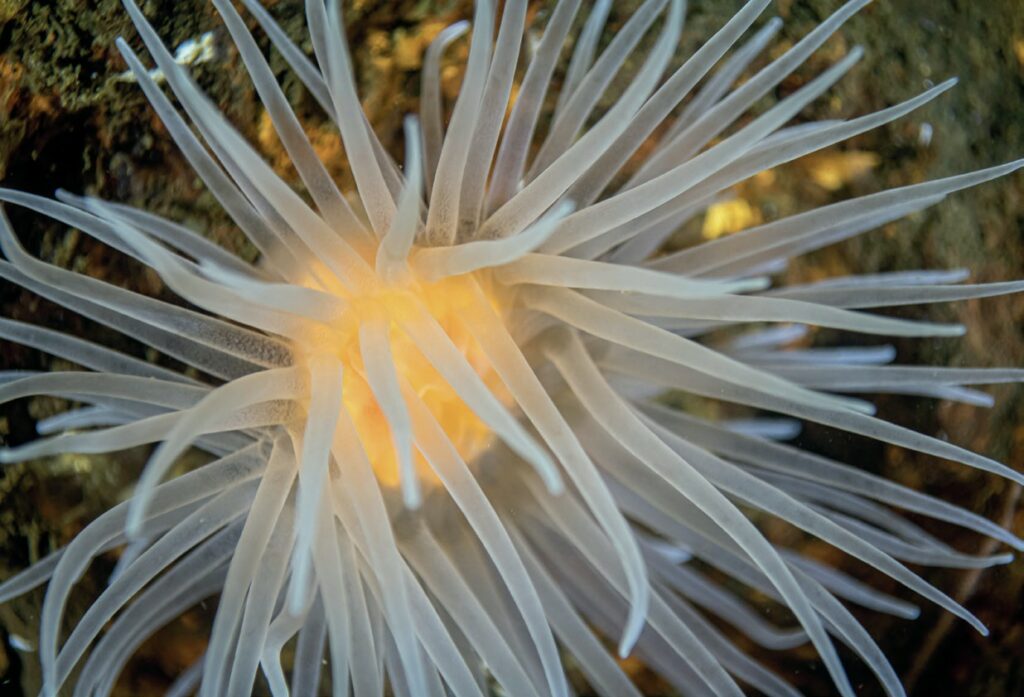

From here I’d suggest heading down to between 15 and 20m and continue to swim perpendicular to the slope until you eventually reach a rather excellent rocky reef. The boulders here are huge and offer a fantastic habitat to a whole array of life from the usual crabs, squat lobster, anemone, starfish, dead man’s fingers, etc. But really, the attraction of Twin Piers is the possibility of seeing conger eels and even the odd lobster. These make their homes in the larger cracks in, around and under the huge boulders.
Zig zag up the reef and then once you’ve reached the time for a return, simply retrace your steps… or should that be finstrokes? Depending on the tide state, if you come up to around 6m and swim back along, you can’t fail to hit the legs of the piers, which offer a rather nice final exploration of the site during your safety stop.
On a nice day (both above and below the water), with the sun breaking through the water around them, the piers themselves are absolutely spectacular. The legs are awash with vibrant colourful life ranging from starfish to anemones and even the odd nudibranch, if you’re lucky!
Exploring the Sites: Conger Alley


Wonder what we might find here? Heading just a couple of minutes south down the road from Twin Piers along the west side of Loch Long you eventually come to my favourite dive site in the loch. Now blink here and you could very well miss the entry and although I did mention the road as a hazard at Twin Piers, on the grand scheme of things it wasn’t a huge concern, however here at Conger Alley you do need to really be careful.
Parking for the dive site is actually on the opposite side of the road to the loch in what can only be loosely described as a small muddy layby. Now at this particular spot there is only really enough room for three cars at a push, but on the way to the site you’ll have passed a bigger, ‘proper’ layby that can be used instead, however parking here will involve a wee bit of a longer walk back to the site, but it is worth it! Crossing the busy road does require care though so I would strongly suggest carrying your kit down to the beach and getting kitted up here as opposed to at the car and then crossing the road with hood, etc, on. Thankfully the beach itself offers some rather strategically place rocks that can be used to prop gear on and even a very handy seawall that helps ‘step into’ a twinset.



Again, like all the sites I’ve discussed, the entry is really easy here. Simply walk into the water, drop down and follow the slope to, I would suggest, about 12m to 15m and swim left for around four minutes. You eventually come to the edge of a rather large rocky reef and from here it is totally up to yourself how deep you want to go. If your certification allows it, I would recommend dropping down the reef to around 26m to 30m and then slowly zigzagging your way back up, taking your time to look in all the cracks and crevices. I genuinely don’t think I’ve ever had a bad dive at Conger Alley and the life on the reef is unbelievable!
There’s obviously the usual crabs, starfish, anemones, etc, but as the name might suggest there is a really good number of congers, and lobster, to be found in the larger holes. Take your time to search each as they can be a little shy, but they are there. It’s also not uncommon to find the odd octopus lurking around on the rocks, so look carefully. There’s also an abundance of fish as well from flatfish to sometimes rather colourful wrasse.
Again, like at Twin Piers, gradually come up the reef and then once you’ve reached the end head back along the slope in the opposite direction you came and you’ll eventually reach the exit.
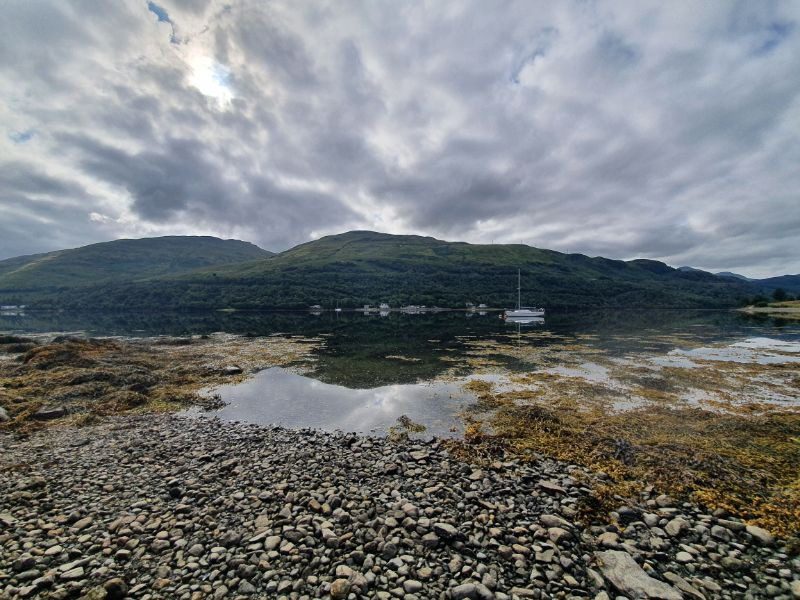

Scotland's Underwater Beauty
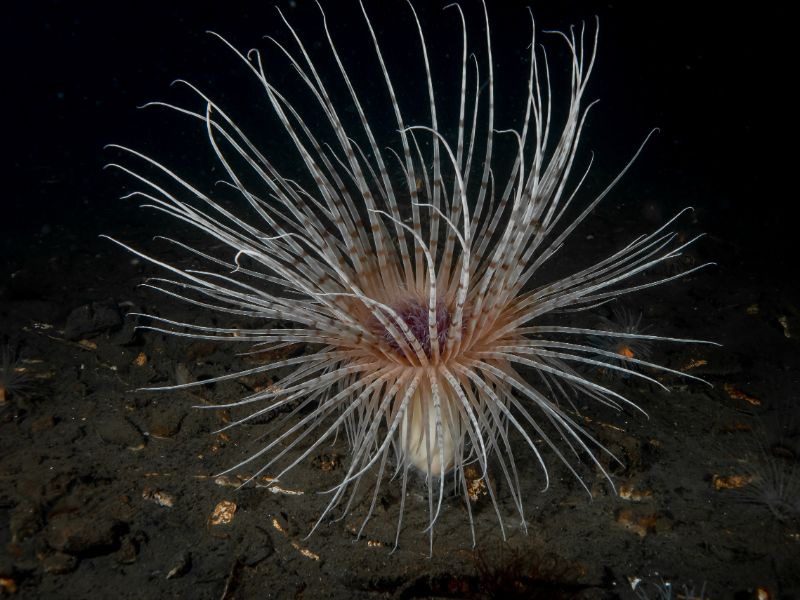

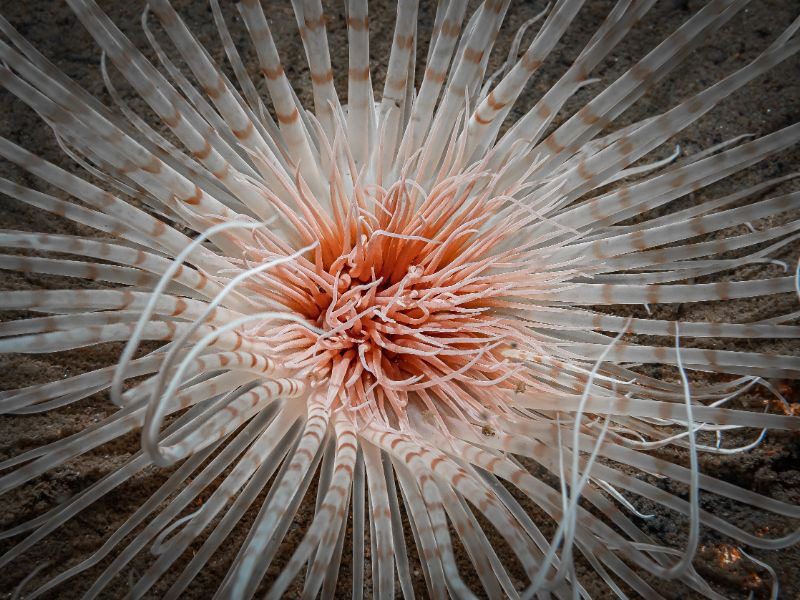

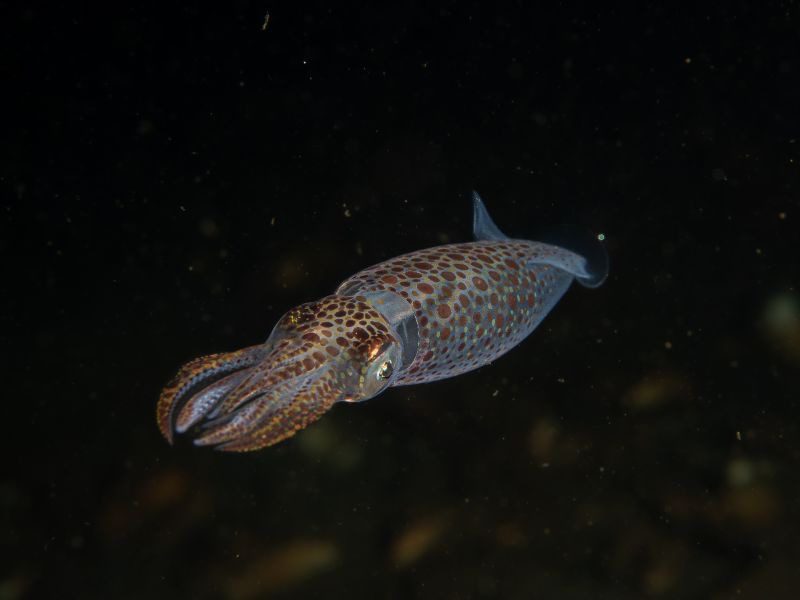





This article was originally published in Scuba Diver UK #68.
Subscribe digitally and read more great stories like this from anywhere in the world in a mobile-friendly format. Link to the article
